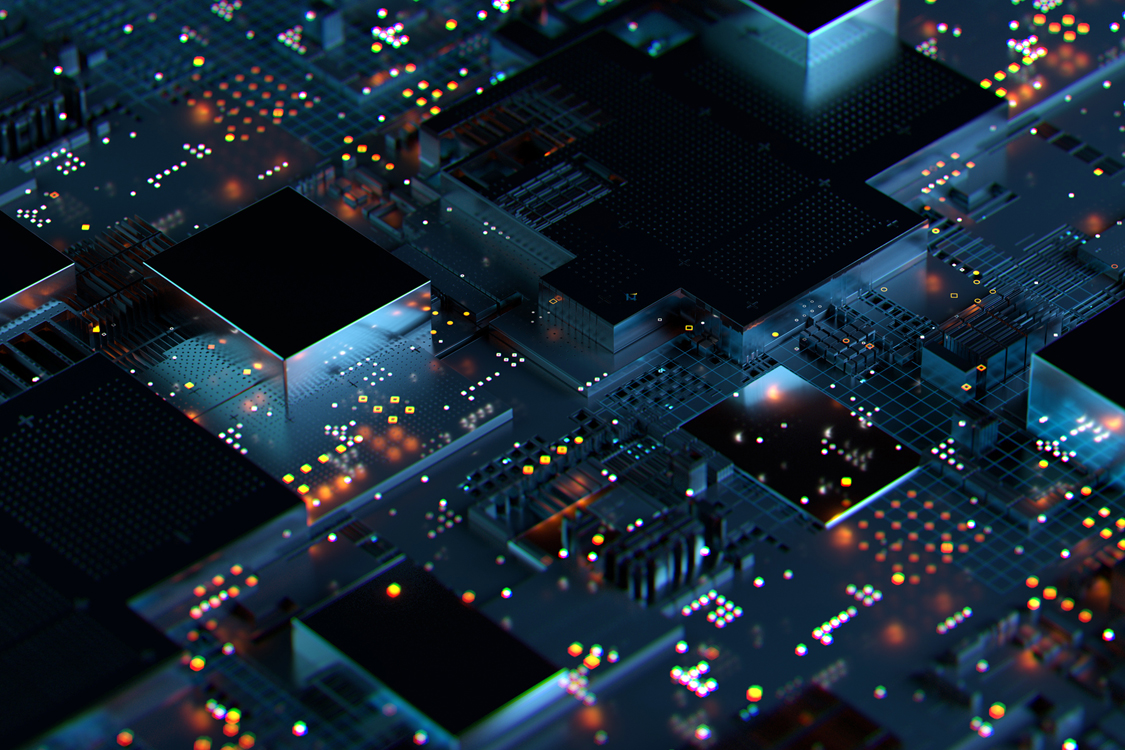 SHARE
SHARE
In 2024 the data center landscape is undergoing a transformative revolution, fundamentally driven by the integration of Artificial Intelligence (AI) and Machine Learning (ML).
These technologies are redefining how data centers are managed and optimized, ushering in an era marked by unprecedented efficiency, performance, and scalability that could only be dreamed of even 5 years ago.
Predictive Maintenance
Predictive maintenance, powered by AI and ML, is revolutionizing the way data centers operate, enhancing efficiency and extending equipment longevity. This proactive approach allows for the timely identification and resolution of potential equipment failures before they occur, thereby minimizing downtime and optimizing operational efficiency.
A crucial aspect of predictive maintenance in data centers is its ability to monitor various components, from hard drives and processors to background equipment like compressors, air filters, and fan units. The integration of networked and automated sensing technologies enables the collection of critical operating data such as temperatures, airflow rates, and power consumption. This data is the lifeline of machine learning algorithms, allowing them to detect anomalies and predict equipment failure or malfunction.
Innovative data center designs further minimize disruptions by incorporating features like uninterruptible power supplies and redundant heating and cooling systems. This facilitates concurrent maintenance, ensuring continuous operation. Additionally, many modern equipment designs can self-diagnose faults and remind maintenance teams about necessary actions, thereby streamlining the maintenance process.
The predictive maintenance approach also adapts to changes in data center setups, including new designs and technology updates. For instance, the shift from traditional hard drives to solid-state drives (SSDs) presents new maintenance challenges and opportunities. SSDs, known for their reliability and faster data access, have different maintenance requirements compared to traditional hard drives.
Studies, including those conducted by Google engineers, have shown that SSDs generally require less frequent replacement than HDDs, but their maintenance is closely tied to temperature management, underscoring the importance of environmental conditions in equipment performance and longevity.
The predictive maintenance market is rapidly growing, with estimates placing its value between 4 to 7 billion dollars annually. It's expected to triple in size over the next five years, signifying its growing importance not only in data centers but also in other sectors like manufacturing and healthcare.
This growth is indicative of the increasing reliance on AI-driven solutions for efficient facilities management and maintaining competitive uptime targets.
Resource Allocation
Resource allocation and workload management, facilitated by AI and ML, represent crucial components in the efficient functioning of modern data centers. These technologies dynamically manage and optimize the allocation of computing resources, ensuring maximum efficiency and performance.

Dynamic Resource Allocation
AI and ML enable data centers to allocate resources such as computing power, storage, and networking bandwidth dynamically. This is achieved by analyzing current workloads and resource usage patterns. By predicting future demands, these systems can adjust resource distribution in real-time, ensuring that each task receives the necessary resources without overloading the system.
Optimization of Server Utilization
One of the key advantages of AI and ML in resource allocation is the optimization of server utilization. These technologies can analyze data center operations to identify underutilized servers and redistribute workloads accordingly. This not only improves the overall efficiency of the data center but also helps in reducing operational costs by avoiding over-provisioning of resources.
Workload Forecasting
AI and ML algorithms excel in forecasting future workload patterns. This predictive capability allows data centers to be proactive rather than reactive in their resource planning. By anticipating periods of high demand, data centers can allocate resources effectively, ensuring they are well-prepared to handle surges in workload without compromising on performance.
Enhanced Cooling and Power Management
AI and ML also play a pivotal role in managing cooling and power systems within data centers. These systems can predict the optimal cooling requirements based on the workload, thereby ensuring that the data center operates within the ideal temperature range. Similarly, AI-driven power management can help in reducing energy consumption, aligning with sustainability goals.
Challenges and Future Developments
While the integration of AI and ML in resource allocation and workload management brings numerous benefits, it also poses challenges such as the need for advanced algorithms and continuous data analysis. Future developments in AI and ML are expected to focus on improving the accuracy of predictions and automating more aspects of data center operations.
The integration of AI and ML in data centers, while transformative, presents several challenges. These include the complexity of implementing AI and ML algorithms, the need for large and high-quality datasets for effective machine learning, and the requirement for specialized skills to manage and interpret AI/ML systems.
Additionally, there's the challenge of integrating these technologies into existing data center infrastructures without causing significant disruptions.
The future outlook for AI and ML in data centers, however, is bright. With the increasing public spotlight on AI and the release of new LLMs like Llama 3 and Google’s Gemini, technology will increase at an exponential rate.
We expect to see more advanced AI algorithms capable of even more accurate predictions and autonomous decision-making. The evolution of AI and ML will likely lead to even more efficient and sustainable data center operations.
Furthermore, as edge computing becomes more prevalent, AI and ML could play a pivotal role in managing distributed data centers, making them more responsive and adaptive to local conditions and demands. The future will likely see AI and ML not just as tools for optimization, but as essential components for the resilience and agility of data centers in an increasingly data-driven world.



